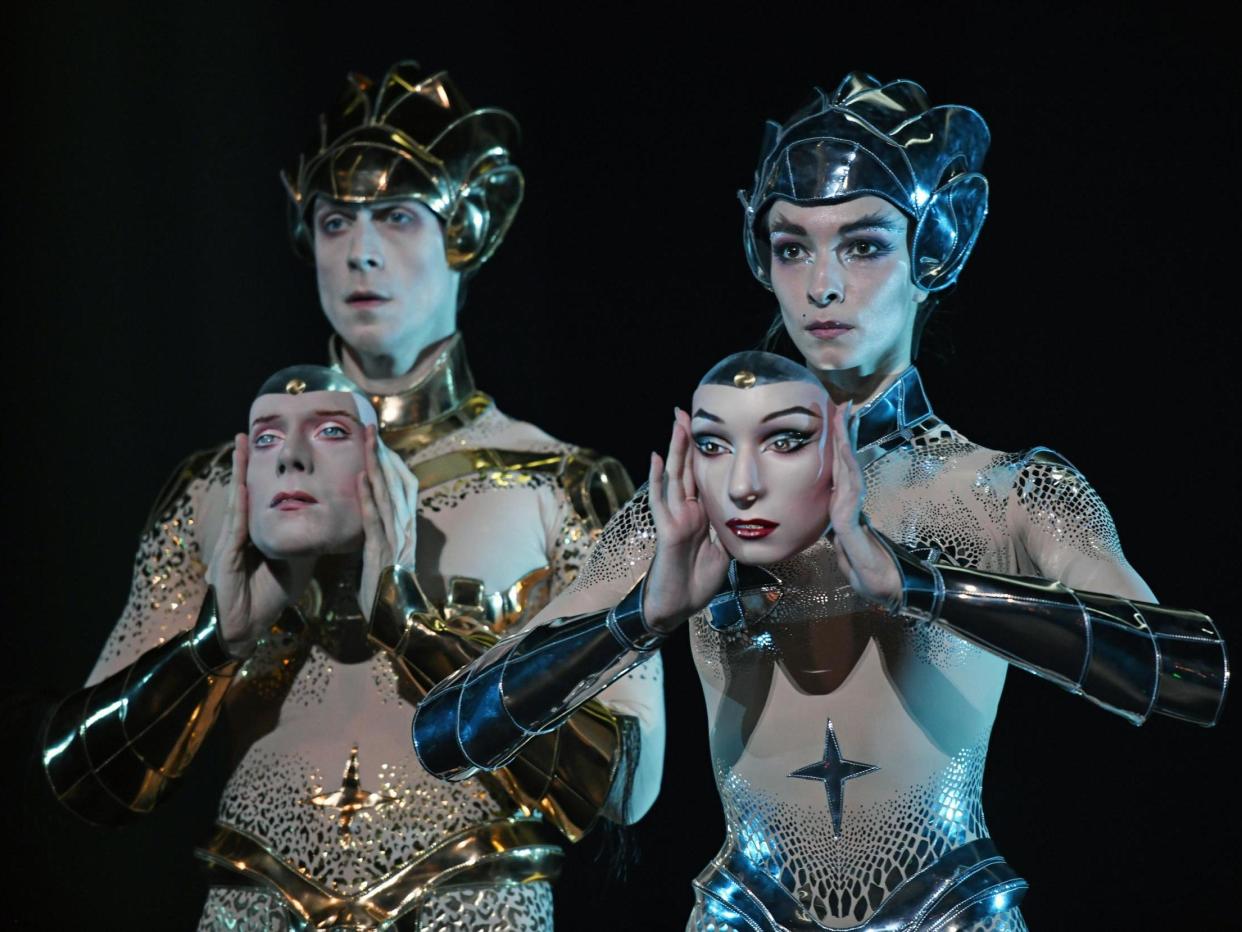McGregor + Mugler, London Coliseum review: a shiny collaboration that never adds up

McGregor + Mugler does not add up. A collaboration between choreographer Wayne McGregor and fashion designer Manfred Thierry Mugler, it weighs its stars down with plumed wigs and shiny codpieces, gesturing at concepts that never come into focus.
You’d think fashion and ballet would be a good fit. They’re both visual forms, both work with the body, both skilled in fantasy and glamour. Yet collaborations often come unstuck. Designers pile detail onto bodies that need to move, like the time Karl Lagerfeld decided what The Dying Swan really needed was a feathery neckbrace.
For this new duet, Mugler dresses the Bolshoi’s Olga Smirnova and the Royal Ballet’s Edward Watson as glittery disco robots. Their body tights have gilded patches over nipples and navels, plus polished metal helmets, crotch pieces and shin pads. At first, they also wear masks of their own faces, with Watson putting on Smirnova’s for a brief solo.
It’s an intriguing idea that just peters out. Ballet has a long history with dancing dolls and automata, the human body made artificial or uncanny. Smirnova and Watson are major stars with very distinctive personalities: her poised classicism against his more expressionist drama. When he wears her face, we just get more of the same: twists and lunges, some high swung legs.
The mask-swapping is prosaic, dancers matter-of-factly taking off the clunky layers. There’s no sense of changing roles or identities, of transformation. Smirnova never tries on Watson’s mask. When she returns to the stage, the choreography takes an odd turn towards Swan Lake, with Smirnova dancing fluttering petits battements before leaning back into McGregor’s stretched poses.
The new duet is part of an oddly-assorted triple bill, part of a MuzArts season at the London Coliseum. It opened with the UK premiere of Radio & Juliet, Edward Clug’s retelling of the Romeo story to music by Radiohead. It’s both stripped back and overlong.
Juliet is English National Ballet’s Katja Khaniukova in bodice and shorts. All the other characters, including the Mariinsky Ballet’s Denis Matvienko as Romeo, are men in black suits. Khaniukova shows an impressive mix of tenderness and full-bodied movement, revealing the human story at the heart of Clug’s near-abstract narrative. Matvienko partners her with dash.
This skimpy evening was completed by Sidi Larbi Cherkaoui’s Faun. The Bolshoi Ballet’s Vyacheslav Lopatin and Anastasia Stashkevich dance with commitment but miss the voluptuous, animal quality of Cherkaoui’s dance.


